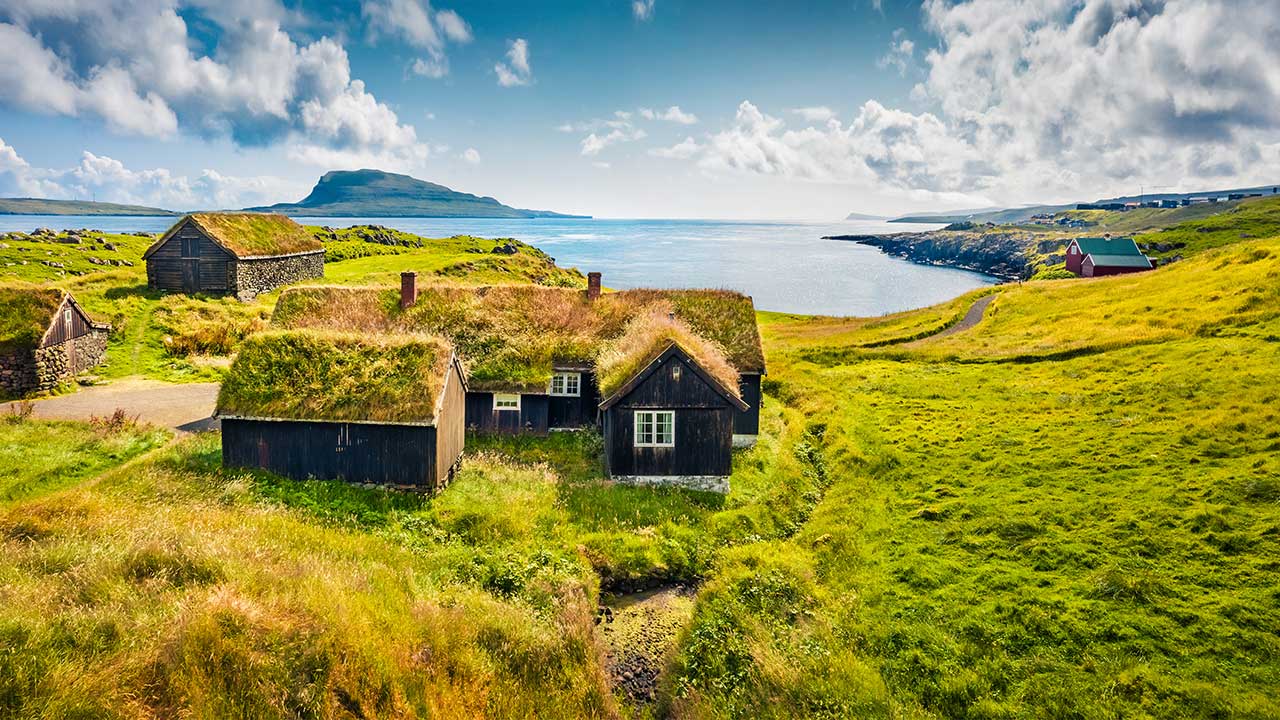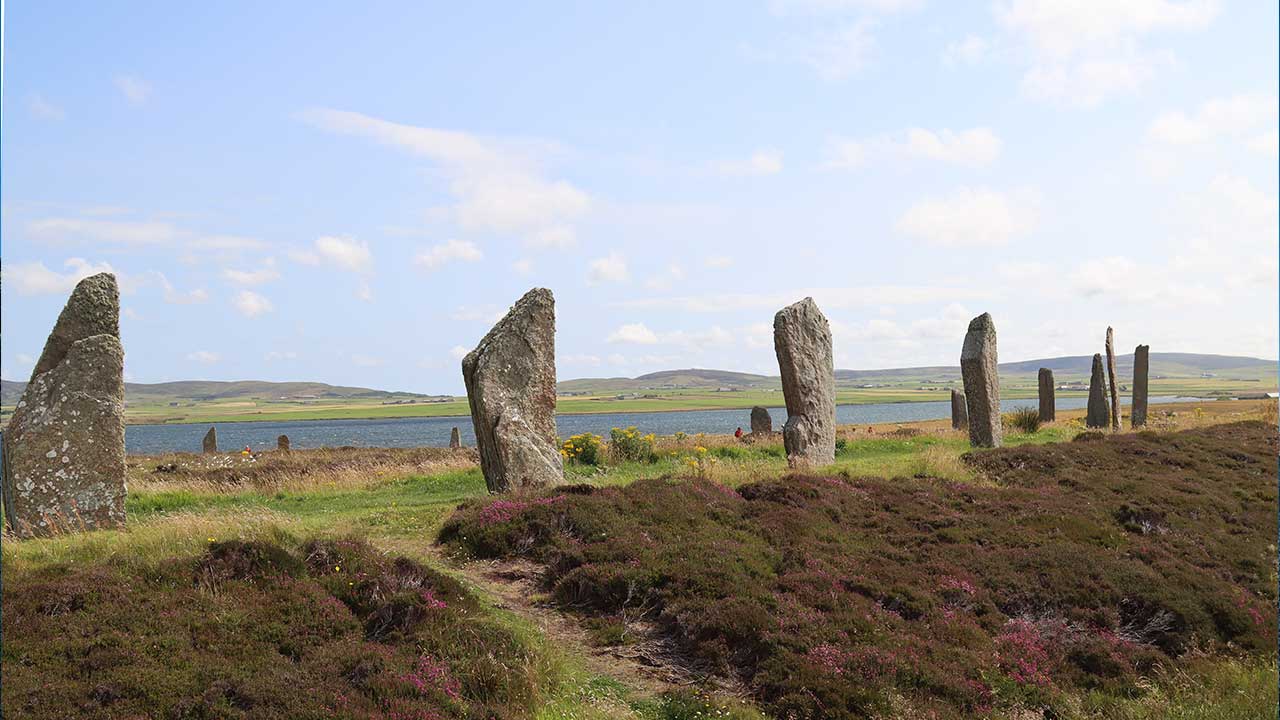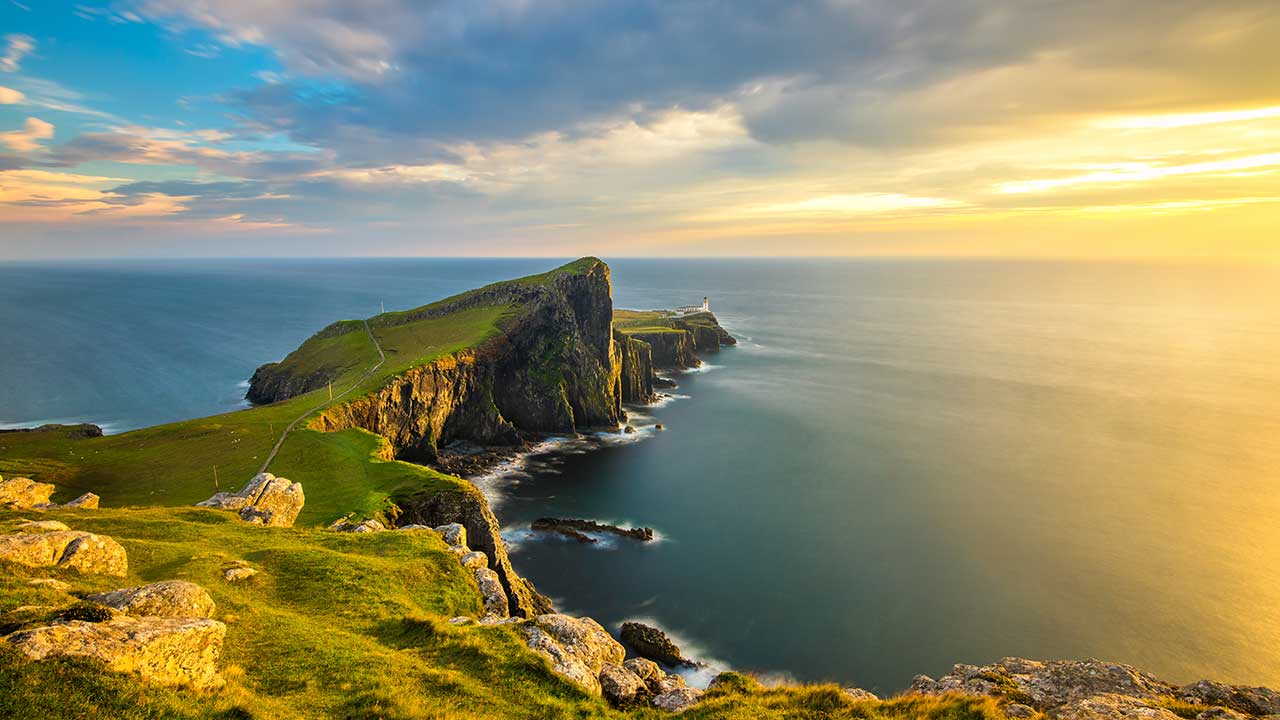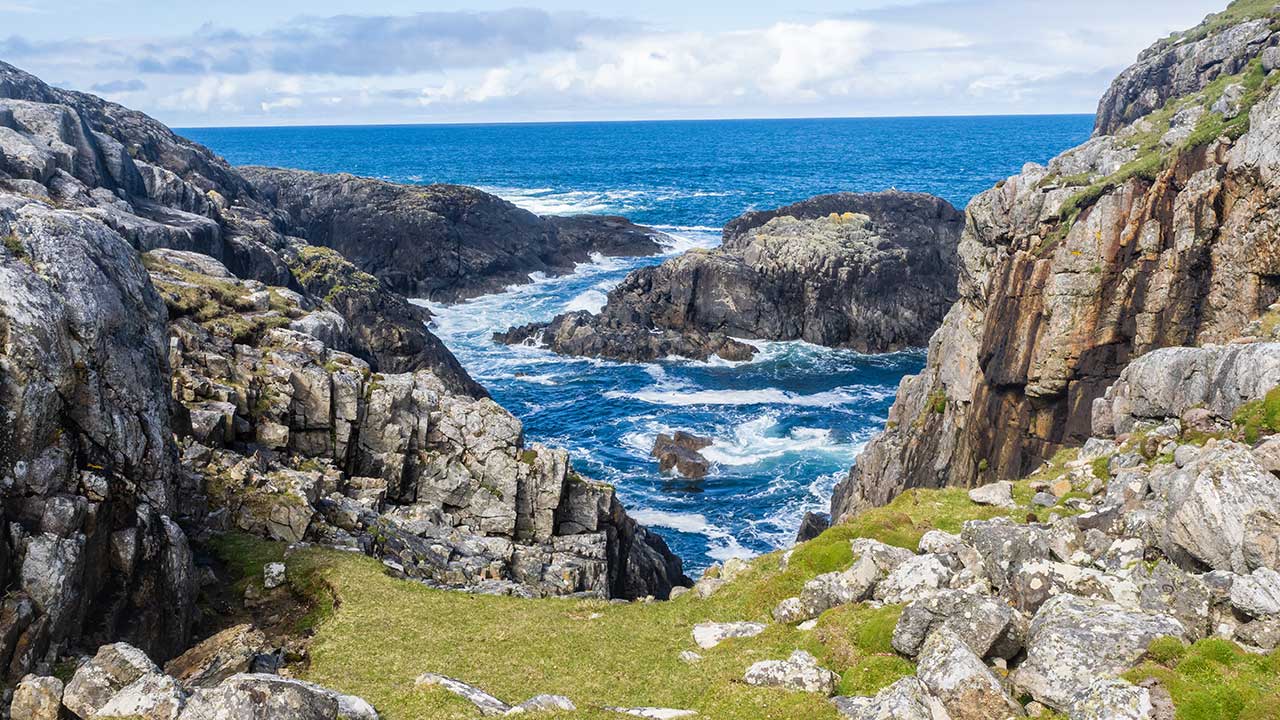
Oslo is capital, but Bergen is the quintessential Norwegian city. A UNESCO World Heritage site, Bryggen (“the docks”) is filled with carefully preserved wooden buildings. Restored as shops, cafés, and museums, the attractive district looks as though it was lifted from another century. Stroll across Fisketorget, the open-air fish market and allow your senses to take it all in (and be sure to sample some fresh shrimp or smoked peppered mackerel). Ride the funicular to the top of Mount Fløien and admire the sweeping view before heading off to visit composer Edvard Grieg’s birth home.

The Shetland Islands is a North Sea archipelago, of which only sixteen islands are inhabited, many only accessible via small sailing vessels. The archipelago is perfect for yachting, with a raw, rugged coastline and low rolling hills, providing opportunities for spying wildlife. Shaped by billions of years of shifting sand and sea, Shetland’s natural landscape is among the most dramatic in the world, teeming with wildlife from puffins to native Shetland ponies. Lerwick is Shetland’s only town, founded as an unofficial marketplace to service seventeenth-century Dutch herring fleets, and the island’s capital since 1708.

This remote archipelago of eighteen islands is truly removed from time, defined by a dramatic landscape with steep cliffs, waterfalls, and green hills, making it the perfect destination for kayaking, hiking, and biking. As a result of its isolation, the Faroese language is considered by many to be the closest to the original Viking language. SeaDream calls on Torshavn (in Faroese, “Thor’s Harbor”), named after the Nordic god of thunder, Thor. Its quaint Old Town is lined with wooden turf-roofed houses and boasts the iconic Tórshavn Cathedral, restaurants, and upscale boutiques. Northern Europe’s best-kept secret is your gateway to the Faroe Islands.

This remote archipelago of 18 islands is truly removed from time. As a result of its isolation, the Faroese language is considered by many to be the closest to the original Viking language. SeaDream calls on the seaside town of Runavik on the Faroese island of Estuary. The area is naturally perfect for hiking, birdwatching, and diving. It’s here that you’ll experience the locals’ approach to exploration: “Take nothing but pictures, kill nothing but time, leave nothing but footprints, make nothing but memories.”

With seemingly unending miles of coastline and beautiful natural backdrops to explore, the Orkney Islands archipelago lies on the rugged northern tip of Scotland. Ideal for yachting, walking, hiking, and cycling, many of the islands along these shorelines are uninhabited. The capital of the Orkney Islands, Kirkwall, is full of character and Norse heritage. A Royal Burgh since 1486, Kirkwall’s name comes from the Norse word “Kirkjuvagr,” meaning “Church on the bay,” as exemplified by its St. Magnus Cathedral.

Known for its rugged coastline, stunning white beaches, wild mountainous terrain, and rich history, Isle of Lewis is the perfect yachting destination for travelers looking to explore Scotland’s natural beauty and Gaelic cultural heritage. The largest of the inhabited islands in the Outer Hebrides, Isles of Lewis is defined by its sandy beaches backed by dunes and machair on the west coast, giving way to an expansive peat-covered plateau in the center of the island. The eastern coastline is markedly more rugged and is mostly rocky cliffs, interrupted by small coves and beaches. Explore the ancient Callanish Standing Stones, one of the most significant archaeological monuments in the Outer Hebrides.

The northernmost island in the Inner Hebrides of Scotland, the Isle of Skye is defined by its rugged landscapes, medieval castles, picturesque fishing villages, and otherworldly natural landscapes—grassy moors, steep glens, tumbling waterfalls, rivers, sparkling mountainsides and pristine harbors, inviting exploration.

Barra is the most southerly of the inhabited islands in the Outer Hebrides, heralded for its serene beaches, stunning green hillsides, machair and moor. Like its neighboring islands of Uist, Lewis, and Skye, the Isle of Barra is pre-Norse and presents a remote, otherworldly quality. From its white-sand beaches on the north side to the rocky inlets on the southeast side, the Isle of Barra exudes a raw, untamed beauty. At just eight miles long and five miles wide, Barra is easy to explore, its Barra Head Lighthouse welcoming visitors since it began operating in 1833. Kisimul Castle, an impressive 11th- century fortress, sits on a small rocky island in Castlebay Harbor. Barra is a coveted destination for outdoor enthusiasts, offering snorkeling, kayaking, paddleboarding, and beach-going opportunities. The highest point on the island, Heaval, provides a particularly distinct vantage point, boasting views of the coastline, perfect for hikers and birdwatchers.

Barra is the most southerly of the inhabited islands in the Outer Hebrides, heralded for its serene beaches, stunning green hillsides, machair and moor. Like its neighboring islands of Uist, Lewis, and Skye, the Isle of Barra is pre-Norse and presents a remote, otherworldly quality. From its white-sand beaches on the north side to the rocky inlets on the southeast side, the Isle of Barra exudes a raw, untamed beauty. At just eight miles long and five miles wide, Barra is easy to explore, its Barra Head Lighthouse welcoming visitors since it began operating in 1833. Kisimul Castle, an impressive 11th- century fortress, sits on a small rocky island in Castlebay Harbor. Barra is a coveted destination for outdoor enthusiasts, offering snorkeling, kayaking, paddleboarding, and beach-going opportunities. The highest point on the island, Heaval, provides a particularly distinct vantage point, boasting views of the coastline, perfect for hikers and birdwatchers.

The Isle of Mull is home to some of the most impressive coastal scenery in Scotland, boasting grand mountains, lush woodlands, charming villages, and sheltered inlets with sandy beaches. Explore uninterrupted coastline, peppered with communities of red and deer, wild goats, mountain hares, and otters. Call on the charming town of Tobermory with its colorful houses and scenic coastal trail that leads to the ruins of thirteenth-century Aros Castle.

Sitting along the banks of the Clyde River, Glasgow is one of Northern Europe’s most endearing and culturally vibrant cities, boasting a variety of art and museums, galleries, luxe restaurants, and pubs. The city’s Gaelic name, Glaschu, fittingly translates as “dear green place.” Glasgow boasts an incredible architectural heritage, ranging from medieval times to the Victorian and Art Nouveau eras, set within a city full of abundant parks and green spaces, making it ripe for exploration. Glasgow is also home to Scotland’s national opera, ballet, and theater companies and is a UNESCO City of Music, presenting a lively music scene. Defined by a strong sense of community and welcoming ambiance, the dynamic city shines for diversity, from the city’s artsy West End to historic East End, home to the 12th-century Gothic Glasgow Cathedral.
Suites & Staterooms
Admiral Suite
From: $ 40,469*
*Single Supplement for this voyage is 200% for Yacht Club Deck 2, 3 and 4. For Commodore, Admiral and Owners Suite, a 200% single supplement rate applies.
Government, Port, Document Issuance, Handling & Service fees: $770 per guest (included)
Please Note: Fares are capacity controlled and may change without notice. The fares are per person based on double occupancy. Single and third person rates are also available. SeaDream Yacht Club strongly recommends that all guests purchase travel insurance.
Yachting Land Adventures & Activities
Pre-Book Online for 10% savings
Please check back soon for updates.
Testimonials
At SeaDream, our experience was great in the lap of nature (at sea). The hospitality, courtesy and responsibility was at its height... flowing throughout the voyage. Really a memorable experience!! Mitu & Harjit S.India
Another great trip with SeaDream. We so enjoyed the service & attention to detail. Sara J.California
© 2025 SeaDream Yacht Club





